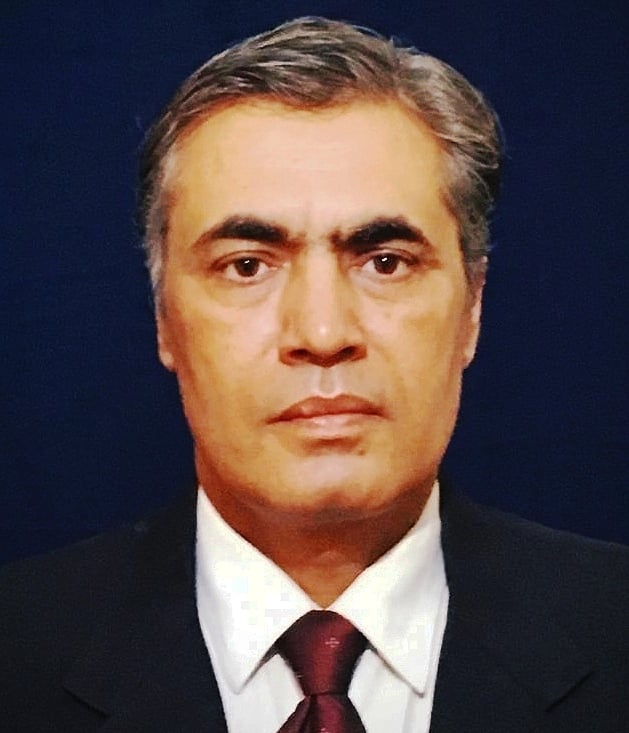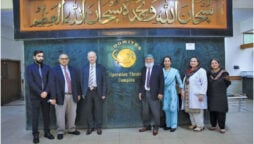
Elections: The Only Way Forward
Caretaker setup to focus on economy rather than politics
Elections are the only solution at this moment. The more they are prolonged, the more it will be disastrous for the economy, said Dr Ashfaque Hasan Khan, renowned economist, while reacting to the increase in the key policy rate by 100 basis points to 16 per cent.
In its monetary policy announcement on November 25, 2022, the State Bank of Pakistan (SBP) shocked the market with a surprise increase in the interest rate after maintaining a status quo during the last three announcements.
“We have gone to the extreme nature of polarisation. It will further lead to deterioration of the economy,” Dr Khan said, adding that the priority should be to bring a caretaker setup before the elections. The caretaker government will focus on the economy rather than politics.
Shaukat Tarin, former finance minister, also weighed upon early elections because of high inflation, which forced the central bank to aggressively increase the policy rate.
“The economy is tanking. Exports are declining by around 18 per cent. The Consumer Price Index (CPI), the headline inflation, is around 24 per cent without including the gas prices,” he added.
The central bank in its policy announcement focused on inflation, which is persistent over the last many months. The Monetary Policy Committee thought enhancing the interest rate is an ideal tool to curb the demand.
The SBP said that, amid the ongoing economic slowdown, the inflation is increasingly being driven by persistent global and domestic supply shocks that are raising costs.
In turn, these shocks are spilling over into broader prices and wages, which could de-anchor the inflation expectations and undermine the medium-term growth. As a result, the rise in the cost-push inflation cannot be overlooked and necessitates a monetary policy response.
“The MPC noted that the short-term costs of bringing inflation down are lower than the long-term costs of allowing it to become entrenched. At the same time, curbing food inflation through administrative measures to resolve the supply-chain bottlenecks and any necessary imports remains a high priority,” according to the SBP.
Dr Abid Qaiyum Suleri, executive director at the Sustainable Development Policy Institute (SDPI), said that the present setup has focused on politics, which hampered the economic activities. Then the flood devastation added to the economic miseries.
“During the last few weeks, we primarily focused on non-issues,” he said, adding that, unfortunately, the economy was ignored.
The entire scenario has painted a bleak picture of the economy. At this moment, Pakistan needs a setup, which should take major decisions.
“In such a scenario, all the political parties should sit together and bring consensus on the economy,” he added.
According to Suleri, the SBP is right at the moment to raise the policy rate because inflation is showing continuous increase.
“The food inflation is around 35 to 37 per cent and the core inflation (non-energy and non-food) is moving up around 14 per cent, which is extreme.”
The central bank said that headline inflation rose almost 3½ percentage points in October to 26.6 per cent (YoY), driven by a normalisation of fuel cost adjustments in the electricity tariffs and the rising prices of food items. The energy and food prices rose 35.2 and 35.7 per cent (YoY), respectively.
Meanwhile, the core inflation further increased to 18.2 and 14.9 per cent (YoY) in the rural and urban areas, respectively, as the rising food and energy inflation seeped into broader prices, wages and inflation expectations. The momentum of inflation also picked up sharply, rising 4.7 per cent (MoM).
“As a result of these developments, the inflation projections for FY23 have been revised upwards. While the inflation is likely to be more persistent than previously anticipated, it is still expected to fall towards the upper range of 5 to 7 per cent medium-term target by the end of FY24, supported by the prudent macroeconomic policies, orderly rupee movement, normalising the global commodity prices and beneficial base effects,” the SBP said.
The present government has an option to reduce the consumer prices by bringing down the domestic prices of petroleum products by passing on the lower rates of oil prices in the international markets. But it was not done and the government opted to generate additional revenue by adding petroleum levy, instead of passing on the benefit.
“They have not passed on lower international oil prices to the common man,” Tarin said, adding that the market was in panic, as imports of raw materials and intermediate goods were not allowed.
The latest data released by the Pakistan Bureau of Statistics (PBS) revealed that the efforts to curb the demand helped a significant reduction in the import bill, but in contrast, the export earnings recorded a sharp decline.
The import bill recorded a reduction of 33.60 per cent to $5.24 billion in November 2022, compared with $7.90 billion in the same month of the last fiscal year. Besides, exports recorded a fall of 18.34 per cent to $2.37 billion in November 2022, compared with $2.9 billion in the corresponding month of the last fiscal year.
However, this helped narrow the trade gap by 42 per cent to $2.87 billion during the period under review, compared with the deficit of $5 billion in the same month of the last fiscal year.
“The letters of credit (LCs) are not being opened. Google, Turkey and others are complaining of non-payments and our worthy finance minister is still adamant that all is good,” Tarin said, adding that the economic indicators printed by the Ministry of Finance show all round deterioration for July-October 2022.
The exchange rate management is a major issue for the central bank, as the rupee value is again showing deterioration due to scarcity of foreign inflows.
The latest policy announcement noted that the current account deficit continued to moderate during both September and October, reaching $0.4 and $0.6 billion, respectively.
Cumulatively, the current account deficit during the first four months of FY23 fell to $2.8 billion, almost half the level during the same period of the last year. This improvement was mainly driven by a broad-based 11.6 per cent fall in imports to $20.6 billion, with exports increasing by 2.6 per cent to $9.8 billion.
“Besides, remittances fell 8.6 per cent to $9.9 billion, reflecting a widening gap between the interbank and open markets exchange rate, normalisation of travel and the strengthening of the dollar.”
For Suleri, under the International Monetary Fund (IMF) programme, the inflation had to increase, as in the last three meetings, a status quo was maintained.
The latest inflation reading for November 2022 is still on the higher side. On a MoM basis, the CPI reading increased 0.76 per cent. In the outgoing month, the main drivers of monthly inflation were housing (+0.6 per cent MoM), clothing and footwear (+2.2 per cent MoM), household equipment (+2.8 per cent MoM) and health (+1.9 per cent MoM).
Sana Tawfik, an analyst at Arif Habib Limited, said that with the winters approaching, an uptick in the winter-related food and non-food items, such as woolen garments and dry fruits has been witnessed.
“The food inflation remained flat on a month-on-month basis with a meagre uptick of 0.1 per cent. The average prices of onions, eggs and tea went up, while the prices of pulses and chicken declined on a MoM basis,” she added.
The urban core inflation, measured by the non-food, non-energy (NFNE) items, increased 14.6 per cent YoY during November 2022, compared with an increase of 14.9 per cent in the previous month and 7.6 per cent in November 2021.
Besides, the rural core inflation increased 18.5 per cent YoY in November 2022, compared with an increase of 18.2 per cent in the previous month and 8.2 per cent in November 2021.
On a month-on-month basis, the urban and rural core inflations went up 0.8 per cent and 2.1 per cent, respectively.
With the high base-effect kicking-in, the headline numbers have started to recede. However, the core inflation remains elevated.
“On the monetary front, we saw the SBP tightening the policy further by hiking the benchmark policy rate by 100bps to 16 per cent on November 25, 2022. To recall, the last hike of 125bps was done in July 2022. The SBP said that this hike was aimed at containing the impact of elevated domestic inflationary pressure, so as to embark on a path of sustainable recovery,” Tawfik added.
Comments

We have gone to the extreme nature of polarisation. It will further lead to deterioration of the economy
Senior Economist

Exports are declining by around 18 per cent. The Consumer Price Index, the headline inflation, is around 24 per cent without including the gas prices
Shaukat Tarin
Former Finance Minister

During the last few weeks, we primarily focused on non-issues. Unfortunately, the economy was ignored
Dr Abid Qaiyum Suleri
Executive Director of SDPI
Catch all the Economic Pulse News, Breaking News Event and Latest News Updates on The BOL News
Download The BOL News App to get the Daily News Update & Live News.








 Read the complete story text.
Read the complete story text. Listen to audio of the story.
Listen to audio of the story.